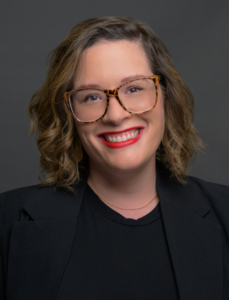One of the most common questions we get asked here at Serving Those Who Serve is: “Am I invested appropriately?” The answer to this question, like so many other questions pertaining to financial planning, is, of course: “It depends.”
We believe that a good investment strategy should be developed and implemented with a qualified professional who helps you base your strategy around your own unique financial situation, planning goals, and personal values. Although investing is individualized, there are some universal key considerations to keep in mind when structuring your investment portfolio.
General Health Status
Health concerns are arguably the number one factor when it comes to making decisions about your financial future. Your expected longevity (and that of your spouse) dictates how long your money needs to last you in retirement, so taking into account your current and projected future health status is important. This affects a myriad of factors, from having a more conservative investment allocation with more money in less volatile, fixed income funds in order to cover unexpected hospital bills, to perhaps deciding to take Social Security early at age 62 or at full retirement age (which, for most people is around 67 these days) instead of delaying collecting Social Security until age 70 for a guaranteed larger benefit. The larger benefit is nice, but not if you don’t make it to 70+.
Retirement Goals
After taking your health into account, your retirement goal is the next most important factor when it comes to building an ideal investment allocation. If you are 10, 15, 20, or even 25 years out from retirement, your allocation should likely be more aggressive than it will be when you are 20 years into your retirement period. Keep in mind, retirement is NOT the finish line, so even when you are a year out from retiring, it’s important to keep an appropriate amount of funds allocated towards equity markets for continued growth. In all my years of planning, I’ve never met a client who intentionally planned on being retired for only one year, so beware of going too conservative too quickly! If you over-allocate towards less volatile investments like fixed income, bonds, and Treasury securities, you’ll run the risk of losing purchasing power over time due to your investments not being able to outpace inflation. The effect is that time will whittle down the value of your nest egg. Invest with an appropriate level of equity exposure and risk in your 50s and 60s so that you’ll continue to have a portfolio to draw from in your 80s and 90s.
Risk Capacity vs. Risk Tolerance
Typically, when folks think of risk, they think about only one component of risk: risk tolerance, defined as the level of risk with which one is comfortable. Risk capacity, on the other hand, is the level of risk that is necessary in order to generate the growth that is required to meet one’s spending goals in retirement. For example, if you want to spend $10,000 per month in after-tax dollars, and you can count on your FERS pension bringing in $3000/mo NET and Social Security bringing in another $2500/mo NET, you have a deficit of around $4,500/mo NET that you’ll need to pull from your investment portfolio. If we assume tax withholding of 22% federal and 6% state on those distributions and annualize them, you’re looking at a gross drawdown rate of close to $70,000 per year, every year. Depending on the size of your portfolio and how long you intend to be retired, it’s unlikely that such a drawdown rate could be maintained without the inclusion of some equity exposure in the portfolio. In this case, it would be wise to speak to a professional to evaluate both risk tolerance and risk capacity to determine the best way forward. If risk aversion remains the number one priority, it’s possible that the spending goal in retirement may need to be adjusted in such a case.
One more note about risk when it comes to the Fed community. Feds in particular are uniquely advantaged when it comes to managing risk, since Feds have not just one stream of guaranteed income backed by the full faith and credit of the U.S. government in the form of Social Security, but rather TWO when you take into account the FERS pension. (CSRS folks do have just one stream of guaranteed income, but it is typically much larger.) This guaranteed income stream makes it more reasonable to be slightly more aggressive and growth-oriented for longer, notwithstanding other unique planning factors that could be at play. Culturally, though, many Feds are standoffish when it comes to risk. Just remember—the level of risk taken often correlates to the level of reward gained.
Tax Planning Considerations
When designing an investment strategy, asset allocation can make a huge difference when it comes to promoting tax efficiency in the portfolio. In general, it’s a good idea to consider grouping investments with a high likelihood of capital appreciation like aggressive stock funds, emerging markets funds, etc. inside a vehicle like a Roth IRA, since all growth inside a Roth IRA is tax-free. Investments with recurring dividend payments, by contrast, could be kept in a tax-deferred vehicle like a Traditional IRA to avoid having to pay income tax on the dividends received. Implementing tax planning techniques like these could reduce the amount of tax paid in the present and over the long term in your portfolio, thus allowing you to retain more of your investment growth over time.
Estate Planning Considerations
Although you should be allocating your investments for yourself first and foremost, some Feds do have the goal of leaving assets to their heirs. Estate planning concerns become increasingly important as we age. Certain accounts, for example, do not transition well to non-spouses, such as HSAs, which are immediately fully cashed out and taxed as income at the inheritor’s income tax rate upon inheritance. It’s important to remain aware of how different account types transition. For a more complex, detailed discussion on this angle of planning, check out my earlier article on structuring beneficiary designations for maximum tax-efficiency when it comes to transferring wealth.
Investing for federal government employees and retirees involves navigating a landscape influenced by many unique factors. By being cognizant of health concerns impacting longevity and planning accordingly, aligning investments with retirement goals, balancing both risk capacity and risk tolerance, optimizing asset allocation strategies to minimize tax burdens, and planning ahead for asset transitions, federal employees can build a resilient investment portfolio that supports their financial well-being throughout retirement.
For more personalized advice tailored to your federal benefits and retirement goals, I encourage you to consult with a fed-focused financial professional who understands the intricacies of federal retirement benefits and their impact on retirement planning. Taking proactive steps today can help secure a stable financial future tomorrow. Reach out to us at [email protected] to book a consultation anytime.
Check out our webinars for federal employees!

Katelyn Murray, CFP®, ChFEBC℠, FBS®, CFT-1™: Relationship Team Lead & Financial Planning Expert
Katelyn is a financial advisor with over a decade of experience working with Feds to build a healthy, balanced relationship with money and to design and enjoy the retirement of their dreams. In addition to her CERTIFIED FINANCIAL PLANNER™ and Chartered Federal Employee Benefits Consultant℠ designations, Katelyn also holds a Master in Business Administration as well as a graduate certificate in financial psychology and behavioral finance. Her unique approach merges financial psychology with traditional wealth management expertise to create an integrated financial planning approach that helps clients make the most of the one resource they can’t get more of: time.
Here at Serving Those Who Serve, Katelyn serves as our Director of Relationship Management, mentoring our advisors and guiding our client experience. She also co-hosts The Fed15 podcast each week with STWS founder Dan Sipe.
Certified Financial Planner Board of Standards Inc. owns the certification marks CFP®, CERTIFIED FINANCIAL PLANNER™, CFP® (with plaque design) and CFP® (with flame design) in the U.S., which it awards to individuals who successfully complete CFP Board's initial and ongoing certification requirements.
**Written by Katelyn Murray, CFP®, ChFEBC®, FBS®, CFT-1™, ECA. The information has been obtained from sources considered reliable but we do not guarantee that the foregoing material is accurate or complete. Any opinions are those of Katelyn Murray and not necessarily those of RJFS or Raymond James. Any information is not a complete summary or statement of all available data necessary for making an investment decision and does not constitute a recommendation. Investing involves risk and you may incur a profit or loss regardless of strategy suggested. Every investor’s situation is unique and you should consider your investment goals, risk tolerance, and time horizon before making any investment or financial decision. Prior to making an investment decision, please consult with your financial advisor about your individual situation. While we are familiar with the tax provisions of the issues presented herein, as Financial Advisors of RJFS, we are not qualified to render advice on tax or legal matters. You should discuss tax or legal matters with the appropriate professional. **





